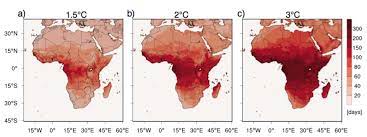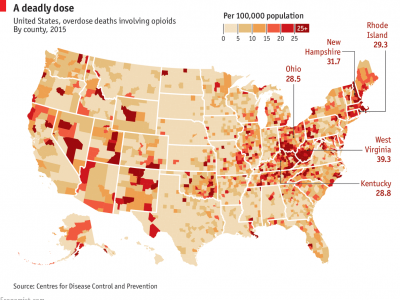Never Give Up. Never Surrender.
Even if we miss our targets, simply shaving or flattening the carbon curve would be worth fighting for.
Although lacking the same eloquence, today’s post is in the spirit of Churchill’s famous speech promising that Britain would “fight on the beaches, … we shall fight in the hills; we shall never surrender.” My point is this: No matter how many battles we end up losing in the fight to stop carbon emissions, we can never afford to give up. It’s not hard to see why some people despair about the climate. The Paris Agreement’s goal is to keep global warming we...
CONTINUE READINGClimate and Colonialism: Some Columbus Day Thoughts
Is climate change itself a form of colonialism?
“In 1492, Columbus sailed the ocean blue.” That’s what we learned in my grade school. Today, Columbus Day remains a day of celebration for some but has become a symbols of colonialism for others. Rather than entering that debate, I’d like to reflect on how issues of colonialism might relate to climate change. The study of colonialism and post-colonial societies is now a major academic focus. I don’t purport to be an expert on that. It seems to me that, at it...
CONTINUE READINGReport from Planet X
Help, our energy system screwed up our planet!
A long time ago, in another galaxy far far away . . . . Dear Galactic Governance Collaborative, Those of us who colonized Planet X now find ourselves in dangerous straits. We request urgent assistance due to escalating environmental instability. You're thinking it's not easy to screw up an entire planet. You're right about that. Sadly, though, it's also not impossible. Yeah, that's what we did. Yes, we know that we'll be interstellar laughingstocks for having b...
CONTINUE READINGAfrica in 2050
The continent will face vast challenges. Dealing with them is a global priority.
Take explosive population growth, acute vulnerability to future climate change, and social vulnerability. Stir well and bake. That’s a recipe for trouble. It’s also Africa in 2050. Overcoming the resulting problems is among humanity’s greatest challenges. Currently, 490 million Africans live below the extreme poverty level ($2/day per person). The number is rising but the percentage is going down, because the overall population is growing faster than the nu...
CONTINUE READINGThe Origins of Climate Awareness in the Legal Academy
Forty years ago, the legal academia was getting its first glimmering about climate change.
Today, climate change is the central, though by no means the only, concern in environmental law. Awareness of the issue began slowly, however. Westlaw searches for “global warming” and “greenhouse effect” pick up only a handful of citations before 1985. The earliest mentions of these terms in the law review literature came in the late 1970s, and only one of the pre-1985 discussions took a comprehensive look at the problem. I found only one relevant reference u...
CONTINUE READINGLos Angeles County Passes Motions to Protect Environmental Justice Communities from Urban Oil Drilling
UCLA Wells Clinic provides legal support.
This post is co-authored by Sean Hecht, Cara Horowitz, and Beth Kent. The Los Angeles County Board of Supervisors passed three motions earlier this month that will start a process of phasing out existing oil and gas drilling on unincorporated land within the County, prohibiting new oil and gas extraction wells, and implementing a strategy to transition workers to stable jobs in the clean energy economy. The landmark motions, which were introduced by Supervisors Holly ...
CONTINUE READINGIf not Berkeley, where?
Court order freezing UC Berkeley enrollment raises critical questions about how California provides for equitable growth in the state
This is my final post on the CEQA litigation over UC Berkeley enrollment. For earlier posts, see here (providing background information), here (discussing the implications of considering enrollment decisions to be within the scope of CEQA), and here (discussing whether to expand CEQA to cover socioeconomic impacts). In this final post, I want to explore the policy implications of the court’s decision in this case. The superior court’s remedy in this case is what r...
CONTINUE READINGWelcoming New Fellows to the Emmett Institute
This month, the Emmett Institute is excited to welcome three new fellows to our program: Daniel Carpenter-Gold, Heather Dadashi, and Andria So. Our fellows serve in limited-term academic appointments at UCLA Law to support our research, teaching, and public service initiatives. Our new fellows join Beth Kent, Emmett/Frankel Fellow in Environmental Law and Policy for 2020-22. - Daniel Carpenter-Gold joins us as a Shapiro Fellow in Environmental Law and Policy for 202...
CONTINUE READINGWhen Agencies Fail
Lives can be lost when agencies fall down on the job.
What happens when agencies fail in their jobs? People can die. The most dramatic example is the opioid crisis, in which a whole series of state and federal agencies fell short. The result has been hundreds of thousands of deaths. The FDA was one of the prime culprits. It bought into a myth, carefully cultivated by the drug industry, that opioids were needed to treat an “epidemic” of chronic pain, with little likelihood of addiction when prescribed by doctors. ...
CONTINUE READINGCEQA and socioeconomic impacts
Why expanding CEQA to cover socioeconomic impacts might harm equity goals
Today I continue my series of blog posts on the CEQA lawsuit over UC Berkeley’s enrollment. My first post provided an introduction to the case and its background; my second post examined the risks of expanding environmental review to small-scale, individual decisions like the enrollment decisions at issue in this case. Today’s post will address the second major issue, addressed in the superior court opinion, examining whether UC Berkeley adequately analyzed the impac...
CONTINUE READING











